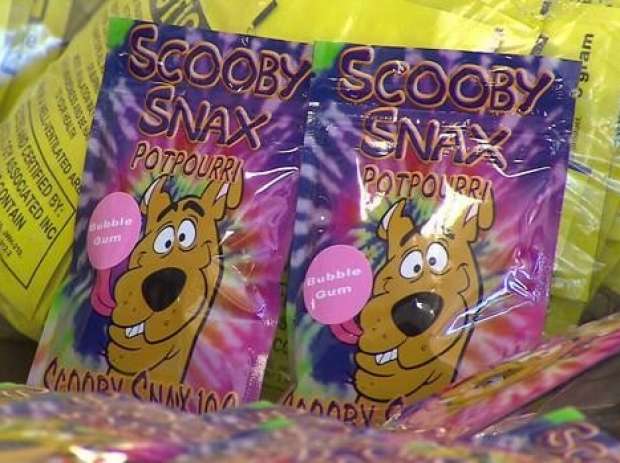Dangerous drug use trend among high school seniors, study reveals

Synthetic cannabinoids (SCs), commonly marketed as "Spice" and "K2", are potent new psychoactive compounds being used among high school students, with a high risk of adverse health outcomes. Some compounds found in SCs resemble those in marijuana and are often marketed as being similar. In reality, SCs have been found to have a potency ranging from 2 to 100 times stronger than marijuana, making adverse health outcomes of SC use exponentially greater than marijuana use.
"This was the first national study examining current use of these new compounds among high school students. It's essential to investigate those who are current users rather than 'ever-users' in order to understand who is currently at risk for adverse outcomes," said Joseph Palamar, PhD, MPH, a researcher at New York University Rory Meyers College of Nursing's Center for Drug Use and HIV Research (NYU CDUHR).
To counter the paucity of research in this area of high school drug use, Dr. Palamar and his team conducted the first nationally representative study, published in the journal Pediatrics, in which current (past 30-day) use of SCs was examined. In this study, they found that 3% of high school seniors reported current use, with nearly half of these users reporting use more than 3 times in the past month.
"This finding is important because it implies that half of current users are using SCs more than once or twice, which may suggest more than just mere experimentation," said Dr. Palamar, also an assistant professor of Population Health at NYU Langone Medical Center (NYULMC). "In fact, 20% of current users reported use on 20 to 30 days in the past month, suggesting daily or almost-daily use."
"The fact that one-fifth of current adolescent SC users report using these drugs in a daily or almost daily basis is of concern," notes Dr. Silvia Martins, MD, PhD, senior author on the study and an associate professor of epidemiology at Columbia University's Department of Epidemiology. "This is particularly notable due to all possible adverse effects associated with SC use."
Dr. Palamar's article, "Synthetic Cannabinoid Use Among High School Seniors," draws data from Monitoring the Future, a nationwide ongoing annual study of the behaviors, attitudes, and values of American secondary school students. The survey is administered in approximately 130 public and private schools throughout 48 states in the US. Roughly 15,000 high school seniors are assessed annually.
"Males, African Americans, and users of various other drugs were found to be at particular risk for frequent SC use," said co-author Monica J. Barratt, PhD, Drug Policy Modelling Program, National Drug and Alcohol Research Centre, University of New South Wales, Sydney, Australia.
SC use is closely tied to marijuana use, as 8 out of 10 current SC users also reported current marijuana use. Therefore, the authors compared current SC users who were also current marijuana users to the "marijuana-only" users who did not report current SC use.
Findings from the study revealed that compared to marijuana-only users, fewer SC users perceived that SC experimentation and occasional use placed themselves at great risk of harm. SC users were more likely than marijuana-only users to report high perception of risk of using marijuana occasionally. Implications of this finding show a potential for lack of knowledge about health risks of SC among its youngest users.
"If there are students using synthetic cannabinoids because they genuinely believe they are less risky than marijuana, this misconception must be addressed through better education stressing the greater danger posed by synthetic cannabinoids," said Dr. Palamar.
In addition, pointing to the fact that many SCs are not (yet) illegal, Dr. Palamar notes "some students may deem real marijuana as a riskier substance because it is illegal to possess. While arrest should in fact be a concern for marijuana users, these new synthetic compounds are becoming too dangerous and are in no way a safe alternative to marijuana."
Current SC users also tend to be current users of other drugs.
"Concurrent use of other drugs such as alcohol can make adverse outcomes more likely," stresses Dr. Palamar. "Our findings help allow clinicians and public health experts to determine who is at risk for SC use and possibly poisoning from SC use, so appropriate directed intervention education measures can be deployed."
"Evolving generations of SC compounds are increasingly harmful and poisonous to overall health, making effective prevention efforts more important than ever," explained Dr. Barratt.
Although previous studies have revealed that marijuana users are at high risk for SC use, this study further revealed risk factors among current marijuana users that increase risk of current use and higher-frequency use of SCs.
"Our research calls for future prevention focused primarily on marijuana users, especially male and/or African American marijuana users who appear to be at greatest risk for frequent use," said Dr. Palamar. "Marijuana users who use other drugs are at highest risk for currently using SCs, so particular focus must be paid to these individuals to prevent increasingly dangerous and severe health outcomes among young users."




















